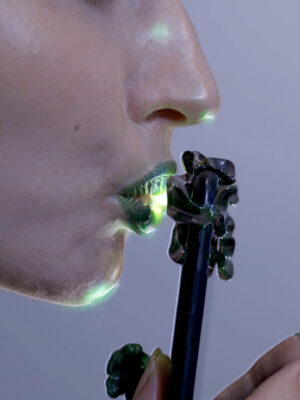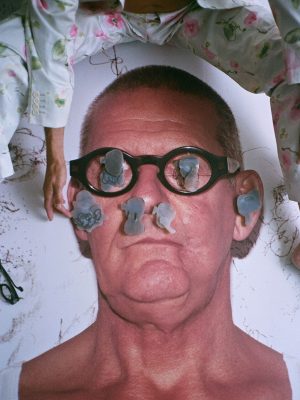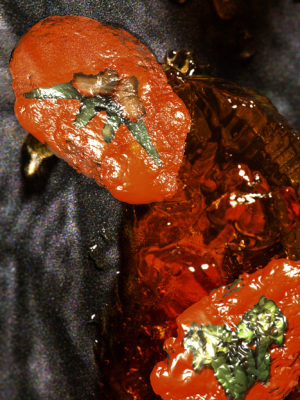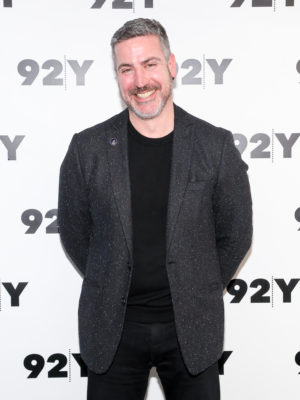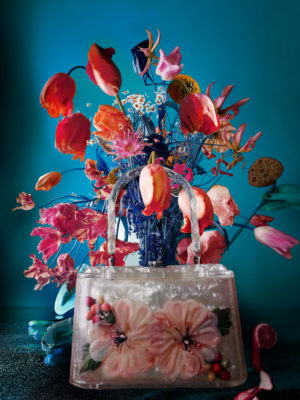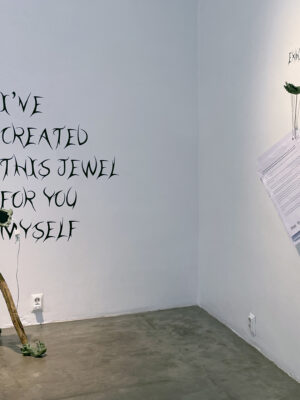
VG: The atmosphere, the shapes and the colours your latest exhibition Tactilite take us to a magical, witchy forest where the story’s protagonist is Seraphita. Your alter-ego is a witch who appears in this fantasy to help us cope with everyday frustrations. How did you start using this sort of fantasy world within your jewellery practice?
DP: For me, everything always starts with jewellery thinking: I wonder what type of jewellery could I play with to show their haptic-visual properties? For example, I think about a medal and how I can show it through a moving picture. I choose a theme that invokes the use and function of the medal – how it becomes part of the intimate ritual of putting it on the body and enhancing a status of a person.
Hence such a game format – a video tutorial that helps a person to boost someone’s importance through such haptic object as a medal. In this sense, magic is a context in which the viewer takes haptic interactions for granted. Magically, a person starts to feel her/his significant, but by what means? – through bodily, banal and everyday interaction with the object.
I do not exalt or create a high ‘pure’ meaning. I am trying to remove mysticism, albeit paradoxically, referring to it stylistically. Magical stylistics is a kind of glue that contextualises my research object, although the public pays much more attention to this exact esoteric element. Probably because it is understandable and is brought into the sphere of the verbal.
I believe that haptic-visual potentials fill the mythologized narratives. In them, I look for a haptic potentiality; topographic and situational ‘pulp’. I make the jewellery serve the theme and stylistics, while it bends, curls, trembles, sticks, tickles. I am not interested in symbolism: yes, it is present in exhibitions, but only for contrast, so that the materiality of the jewellery ‘bulges’ so that the viewer can experience it.
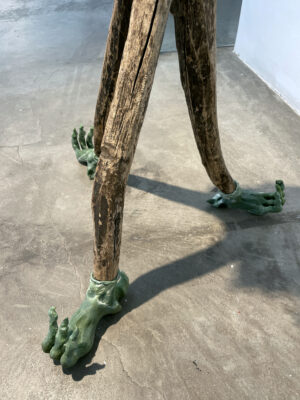
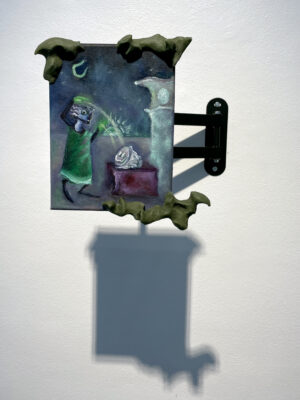
VG: What is the main reason you use such tools (as fictional narrative) to communicate with your audience? Where is this fantasy world originate?
DP: The magical fictional character Seraphita is very directly related to haptic visuality. Magic is a context where people are used to seeing powers in objects… powers that change their lives, their bodies. These can be relics that are usually not allowed to touch, but which are believed can heal (including physically) only by seeing them in the church.
This means that I have chosen a context of magic where haptic visuality is the norm. Even if a person does not believe in magic, he knows that there are such rules. So this approach allows me to study my problem more directly, without barriers. And later, if I already know how haptic visuality works, I can apply it in other contexts. It is exciting for me that I do not study what is visible in my exhibition (magic), but it is a tool to frame the question of research.
VG: There was an exhibition titled ‘Look What I Did’ in 2020 by Dot Melanin showing 61 rings, each ring with a written anecdote with the purpose of making the viewer pause a little longer on his work and explore all the details. Research shows that visitors spend an average of four to five seconds looking at one piece and then move on to the next. It seems like your videos have the same purpose, inviting people to have a different, longer, deeper view of your works. What sort of connection are you hoping to achieve with the viewers?
DP: Wow, have not heard of Dot Melanin’s exhibition, but it sounds fantastic. Thanks for the reference. In fact, visitors told me that they would have been experienced the physical jewellery differently if they were exhibited without the videos. Moreover, the jewellery on the exhibition was a kind of conventional metal pieces – probably nothing extraordinary in terms of technique and materials. What was more important for me is the narrative around the pieces – how the videos can construct the video-sketch and boost the meaning of the physical objects. Some people said that the videos are kind of ‘weird advertisement’ for the jewellery; some said that while watching the screen they really ‘felt’ what the jewellery was about.
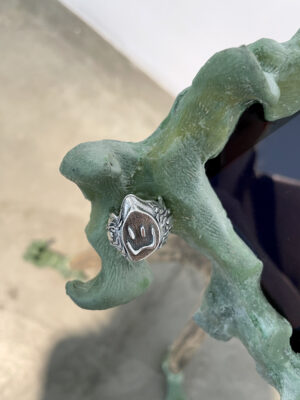
VG: How do you see the difference in value between the physical object and the online jewellery related experience?
DP: I see great potential in using a screen in contemporary jewellery practice. It invites speculation on how the jewellery can affect the body without having its own body, as strange as it sounds. The jewellery image may impact the viewers’ perception by freeing itself from direct contact with skin. My aim, in particular, is to analyse the audience’s perception.
Both – physical as well as screen-mediated jewellery have their potentialities. Both can empower identities and be ‘experienced’. In the case of digital, the viewer’s perception can be controlled by illustrating HOW jewellery is experienced: to show haptic interaction with the skin, gestures, intimate rituals with the body. Moreover, you can resort to the video effects themselves, such as blur or close-ups. I like close-ups because a small jewelley becomes huge on a 4K screen and takes on hyperreal proportions.
In the history of contemporary jewellery there were which invited the public to touch the jewellery. This topic, however, did not interest me as such. The reason for that is because my practice includes a lot of digital techniques and perceiving the jewellery through a screen — via 3D modelling, photographing and filming. What seems more intriguing is: can the jewellery that is being mediated through the screen impact the viewers’ senses as strong as it would be worn?
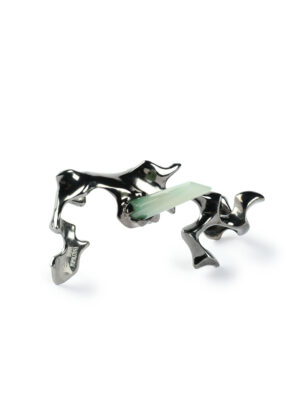
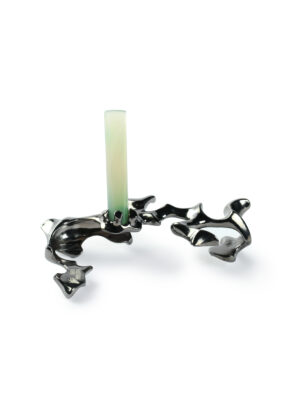
VG: How do you think our relationship to objects changes or will change in this rapidly developing virtual space?
DP:
I think that there will always be attachments to objects: whether digital or physical. Think about NFT: the fact that media images shape our attachment, attract us into dreams and a fantasy world is nothing new. Jean Baudrillard, for example, was a philosopher who framed people’s relationships with media objects.
Art objects and objects of consumption come from the material world. But these same things connect us to something intangible. Things are channels. We project our expectations on them. For example, to the jewellery that will say something visually about us; that it protects us from the evil eye; or that it informs others about our social status, and so on.
When I speak to the audience about how they experienced the video-works, they appeal to emotions, material-qualitative, physiological, linguistic descriptions and expressions. Perceiving new media objects, including digital jewellery is always an ‘embodied’ experience – it is situated and located somewhere in the room and time, or how ‘phenomenologists’ say: ‘in the flesh of the given’.
VG: The core of your jewellery is still physical objects. Can you imagine that in the future you will create and present jewellery wholly in cyberspace?
DP: I know that at the moment I am interested in: the banality of being; getting rid of ‘high’ or ‘pure’ meaning in exchange for stickiness and dirt; haptic visuality; and potentialities of the digital image of jewellery within it. I will create ‘something’ (physical or digital – doesn’t matter) as long as I am interested in these topics.
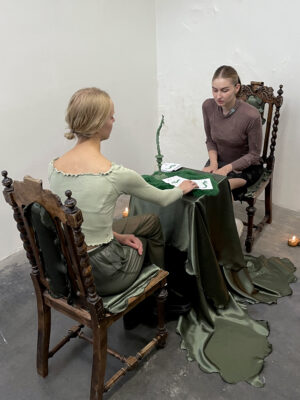
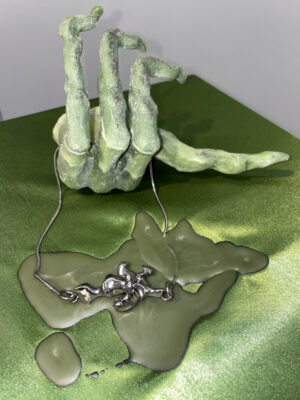
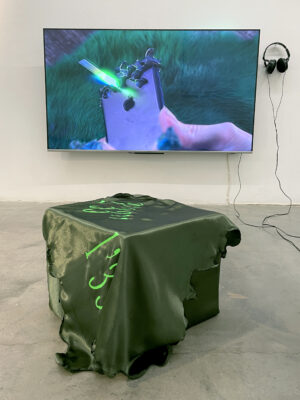
VG: Who is your audience? Hyperreal jewellery, with its futuristic functionality and cyberspace, gives a feeling that people of Generation Z can easily connect with. Do you think that the Millennials or the older generations can understand and appreciate it?
DP: I like art that is as sharp and funny as a meme. I see how people of different ages can experience emotions while watching my artworks and this is the biggest reward for me. Digital technologies have long entered everyday life and it is not so new anymore. Now when the Internet and other digital dimensions are not a novelty anymore, artists can use them not only for the sake of ‘effect’ but for something more refined.
VG: Let’s travel to the future, where technology had further developed and things that are today still limited now easily achievable. How do you see yourself and your jewellery practice in this future imagination?
DP: I will continue my practice in the field of contemporary jewellery. It is enjoyable for me to participate in the building of material culture and heritage – doesn’t matter digital or physical or some weird hybrid of it.
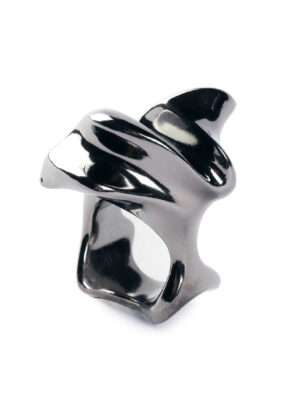
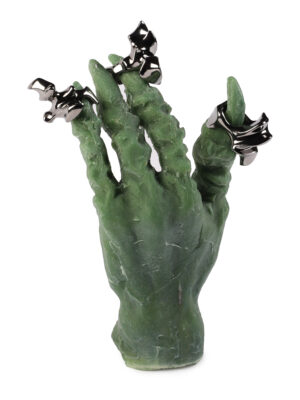
VG: I really liked the video where Seraphita uses a drag face filter onto the portraits of Estonian politicians. By this act, metaphorically, she stops sexism and homophobia in society. This is a very gentle yet direct communication about these topics. Do you see yourself as a rebellion when it comes to social issues? Are social and political problems the main topics you wish to communicate through jewellery?
DP: Thank you. I came to these topics through jewellery thinking. I thought about what type of jewellery I could engage with so that to show their haptic visuality. I looked at Estonian folk jewellery, and thought, what can I do with it in front of the camera? I chose a theme based on the symbolic past of this jewellery. Haptic actions then acquired a context and allowed me to talk about integration, for example. I was able to talk about big topics through a such small thing as jewellery.
Same with drag queen face-filters that can change our appearance. I approached them through those who would probably won’t put that filter on their face – conservative Estonian politicians. And thus were able to address topics of sexuality and gender. So that all political issues came through thinking about jewellery. I did not have a direct aim to address them, but when I got there – please, you are welcome – let all flowers bloom.
